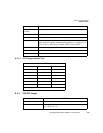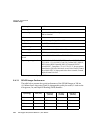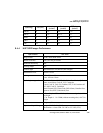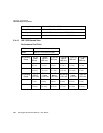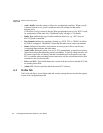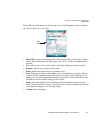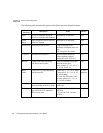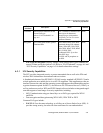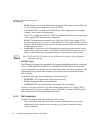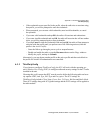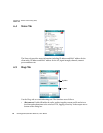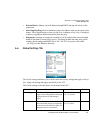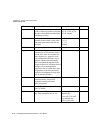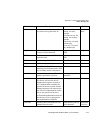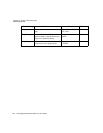
Appendix A: Summit Client Utility (SCU)
SCU Security Capabilities
Ikôn Rugged PDA (Windows Mobile 6.1) User Manual A-5
• EAP-Type & Encryption: Security settings. These settings allow you to enhance the
security of data across the wireless LAN. Refer to “EAP Credentials” on page A-6 and
“SCU Security Capabilities” on page A-5 for details about these settings.
A.3.1 SCU Security Capabilities
The SCU provides integrated security to protect transmitted data as well as the PDA and
wireless WAN infrastructure that transmit and receive data.
A foundational element of the IEEE 802.11i WLAN security standard is IEEE 802.1X and a
critical application on a mobile device is an 802.1X supplicant. This supplicant provides an
interface between the radio and the operating system and supports the authentication and en-
cryption elements required for 802.11i, also known as Wi-Fi Protected Access 2 (WPA2), as
well as predecessors such as WPA and WEP. Summit software includes an integrated suppli-
cant that supports a broad range of security capabilities, including:
• 802.1X authentication using pre-shared keys or an EAP type, required for WPA2
and WPA.
• Data encryption and decryption using WPA2 AES, WPA TKIP or WEP.
Common EAP types include:
• EAP-TLS: Uses the same technology as a follow-on to Secure Socket Layer (SSL). It
provides strong security, but relies on client certificates for user authentication.
Credentials Authentication credentials for the
selected EAP type.
Refer to “EAP Credentials” on
page A-6.
User: Username or Domain/User-
name (up to 64 characters).
Password: up to 64 characters.
For PEAP: CA Cert–CA server
certificate filename.
None
Encryption Type of encryption used to protect
transmitted data.
None, Manual WEP, Auto WEP
(generated during EAP authenti-
cation), WPA PSK, WPA TKIP,
WPA2 PSK, WPA2 TKIP, WPA2
AES, CCKM TKIP.
For Manual WEP: Up to four
static WEP keys.
For PSK: ASCII passphrase or
hex PSK.
None
Radio
Attribute
Description Value Default



